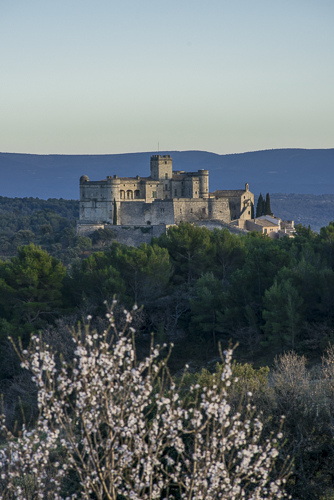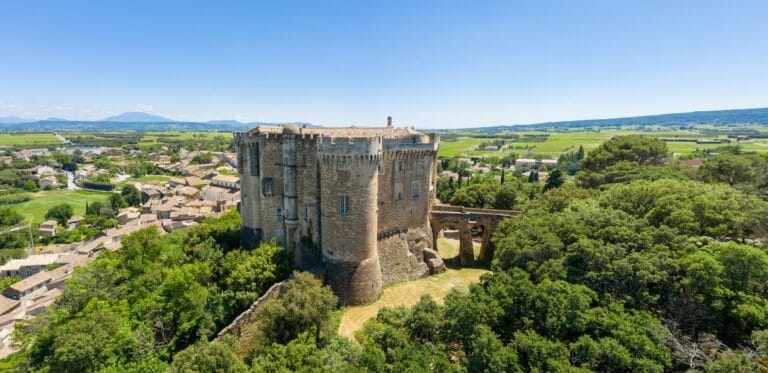Château d’Entrechaux: A Medieval Castle in France Reflecting Feudal and Ecclesiastical History
Visitor Information
Google Rating: 3.9
Popularity: Very Low
Google Maps: View on Google Maps
Country: France
Civilization: Unclassified
Remains: Military
History
The Château d’Entrechaux stands on a rocky hill above the village of Entrechaux in France and was established by medieval European builders, reflecting the region’s feudal and ecclesiastical history. Its origins date back to the 10th century, with its earliest known association to the Count of Provence, Geoffroy, who in the mid-11th century granted the land to Pierre II de Mirabel, bishop of Vaison, and his brother Bertrand. This marked the beginning of the castle’s role as part of the church’s territorial holdings.
The first historical mention of the castle appears in 1108 when Bishop Rostang sought papal confirmation to elevate the manor to the status of an episcopal seat. From this point, the bishops of Vaison held joint lordship over the castle for about 450 years, managing it alongside local nobility. This dual control began around 1230 and shaped the castle’s development as both a religious and feudal stronghold.
In the early 16th century, political changes altered the castle’s ownership. Pope Benedict III sold it in 1500 to Jérôme de Guiramand, a nobleman, under the condition of an annual payment. This transaction was later confirmed by Pope Julius II in 1506. Despite efforts by Bishop Thomas Cortes to reverse the sale in 1533, Jérôme de Guiramand retained ownership after paying a settlement, marking the castle’s transition from church to secular control. It remained under secular ownership until the upheavals of the French Revolution.
Throughout the 17th and 18th centuries, the château passed through several hands, including members of the Fogasse family and later Louis d’Ailhaud, a local priest who acquired it in 1761. His successor, Jean-Pierre Gaspard d’Ailhaud, was the last lord before the revolution’s disruption. The château’s military significance became evident on September 9, 1792, when it suffered a violent attack by brigands, leading to partial destruction. The following century saw the castle’s further decline, as stones from the remains were taken for local use and vandalism reduced the once-imposing structure to ruins. Since the 1980s, the Guiffray family has owned the site and begun restoration efforts.
Remains
The Château d’Entrechaux occupies a commanding rocky peak and is composed of two distinct fortified structures built at different times. Its layout follows a traditional Provençal model, combining a fortified keep, chapels, and defensive walls arranged around an enclosed courtyard.
The older section, known as the Petit Château, was constructed around the 10th century by the Bishops of Vaison. It includes a fortified chapel dedicated to Saint Quenin and a cistern carved directly into the rock to collect and conserve water. These features underscore the castle’s initial role as an episcopal residence, blending religious and military functions in a compact design. The Petit Château’s walls and cistern remain partially preserved, offering insight into medieval construction techniques.
Below the Petit Château lies the Grand Château, built later by the village’s secular lord. This larger complex features a square keep that rises over 20 meters high, serving as a stronghold and final defensive refuge. Its chapel, dedicated to Saint Laurent, and surrounding buildings were enclosed within robust ramparts. Between the two castles, a shared gatehouse was equipped with a bretèche—a small overhanging defensive platform—allowing control and protection over the connecting passage. This arrangement reflects the centuries-long joint stewardship of ecclesiastical and secular authorities.
Today, visitors can see remnants of the defensive walls, foundational structures, terraces, and chapels that once formed the heart of the château. Restoration activities since the 1980s have focused on stabilizing masonry, rebuilding sections of walls, and partially reconstructing living quarters. The castle’s construction predominantly used local stone, some quarried directly from the site during later periods, particularly in the 19th century when the ruins served as a stone source for the community. Positioned to overlook the village and the Ouvèze valley, the castle also formed part of a network of lookout points connecting neighboring fortifications at Crestet and Beaumont-du-Ventoux, highlighting its strategic importance.










